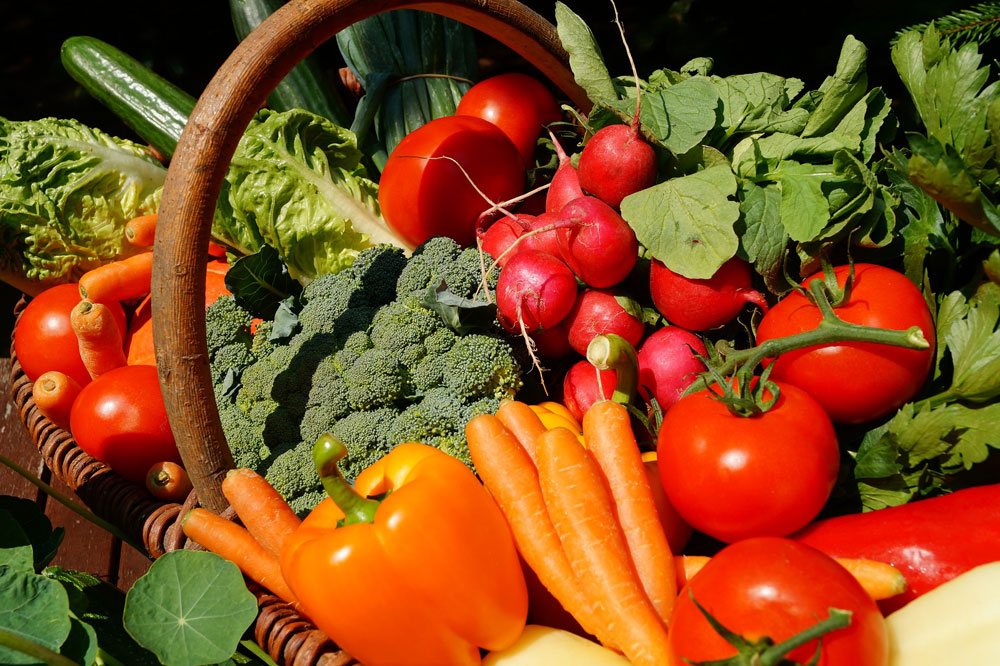 Is a vegetable garden on your spring yard to-do list? Now is the perfect time to get started, including planting some of your first crops! If you don’t have a green thumb, a vegetable garden may seem intimidating. However, it doesn’t have to be. With some careful planning and work, you can produce a hearty crop of fresh-garden veggies to enjoy in the months to come! Here are some tips and tricks for creating your vegetable garden.
Is a vegetable garden on your spring yard to-do list? Now is the perfect time to get started, including planting some of your first crops! If you don’t have a green thumb, a vegetable garden may seem intimidating. However, it doesn’t have to be. With some careful planning and work, you can produce a hearty crop of fresh-garden veggies to enjoy in the months to come! Here are some tips and tricks for creating your vegetable garden.
Pick the Right Location
One key factor in whether your vegetable garden will do well is location, so make sure you carefully select where you want to create the garden. According to The Old Farmers Almanac, there are three key elements to selecting the right location: sunshine; moist, well-drained soil; and stability.
- Sunshine: Most vegetables need at least 6 hours of direct sunlight per day, so choose a spot that gets plenty of sunshine.
- Soil: While vegetables need ample water to grow, you can get too much of a good thing. Your soil needs to be moist but not overly wet. Overly wet soil means wet roots, which can lead to root rot. When creating your garden, make sure water drains well and does not pool. If you cannot find an area where the soil will be moist and well-drained, raised beds, which allow for improved drainage, are a great option. Whether you plant in an existing bed or create new raised one, make sure your soil is free of rocks and other debris, which can interfere with root growth. Also, break up soil and aerate it before planting. For improved nutrition and growth potential, mix a couple of inches of organic material, such as compost or well-rotted manure, into the soil.
- Stability: You will also want to build your garden in a stable environment. An area that gets strong winds could lead to damage to your vegetable plants, including knocking them over and preventing pollination. You also want to avoid areas that get a lot of foot traffic or floods easily.
What Size Garden?
A common error of those new to vegetable gardens is going too big to start. This can result is frustration and an overabundance of vegetables you and your family will never eat. Start small and be realistic in what you and your family will actually use. Before you even step foot outside to begin planting, create a list that includes what vegetables you want to plant and how many of each vegetable you want to plant. Once you have that list, you can create a garden plan and rough layout that will help you determine how much space you need.
What to Grow and When
So what should you grow? The simple answer is whatever your family will eat. You also want to plant vegetables that do well in Utah’s climate and plant them at the right time. Utah State University’s Extension is a great resource on what to plant and when to plant it. The USU Extension has divided vegetables into four groups: Hardy, Semi-Hardy, Tender, and Very Tender. Depending on which category the vegetables fall in, you will begin planting anywhere between March and June. Some vegetables can also be planted later for a fall harvest. Click here for USU Extension’s full breakdown on what to plant when.
Watering
Seedlings require a gentle touch when it comes to watering. Use the shower setting on your nozzle, and water the soil around the plants, avoiding the leaves and immature stalks. The best time to water is the morning, providing plants with moisture needed on hot days and making it easier to absorb nutrients. Watering in the hot afternoon can shock young plants and cause scorching on tender leaves. Watering in the evening could leave excess moisture on leaves in cool overnight temperatures, which could lead to plant disease.
Additional Planting Tips and Tricks
Plant tall veggies, such as sweet corn, on the north side of your garden so they do not shade shorter plants.
Buy high-quality seeds. The saying “you get what you pay for” is especially true when it comes to seeds. Spend a little extra money on your seeds to help ensure they germinate and produce great produce for you.
Don’t plant all the seeds for each vegetable at the same time. Stagger the plantings over a few weeks to ensure you have a steady harvest of each crop to enjoy all summer and fall.
Pay attention to harvest time (noted on seed packets – look for “days to maturity”). Some crops mature quickly and have a very short harvest period (radishes, bush beans). Other plants, such as tomatoes, take longer to produce but also produce for longer.
Using seedlings? To minimize the shock of transplanting, plant them on a cloudy day or in the morning while it’s still cool.
If your plants require staking, do that sooner rather than later to avoid breakage.
Once plants are 4-6 weeks old, you can begin fertilizing. Follow suggestions on seed packets or nursery materials.
Weed your garden regularly to ensure they don’t interfere with the growth of your vegetables.
To help prevent weeds and grass from encroaching on your garden, install plastic or metal edging around the perimeter. The deeper the edging can go, the better.
Mix in flowers and herbs to help prevent pests and attract pollinators to your garden. This is particularly important for vegetables that require pollination to produce, such as beans, cucumbers, peas, peppers, and tomatoes. Marigolds are a great option and can be planted liberally throughout your vegetable garden. Flowering herbs like oregano, rosemary, sage, and thyme also repel many pests and draw in bees.
Keep a garden journal. This will help you remember what worked well, what didn’t, and what you may want to do differently next year.
Looking for your dream home? Liberty Homes has been building new homes in Utah for more than 25 years. We take pride in our trade, crafting each home as if it were our own. Our quality, affordable homes are energy smart and thoughtfully personalized for your active Utah lifestyle. We currently have new single-family homes available in Bluffdale and West Valley and townhomes available in Salt Lake City. Contact us today to get started building your new home.

Want home decorating and maintenance tips, craft ideas, recipes, and more delivered right to your inbox?
Sign up for our monthly newsletter:




